Milk: End of EU quota heightens UK farmers' fears
- Published
- comments
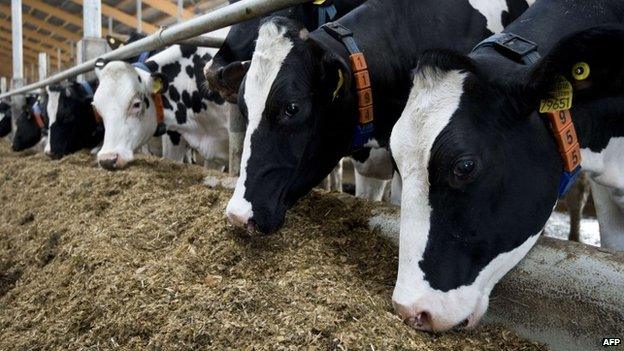
Small farmers fear only larger businesses will benefit from the quotas being abolished
EU milk quotas have been scrapped after more than three decades of efforts to prevent overproduction.
The system, set up in 1984, is ending so EU dairy businesses can compete with international rivals in supplying fast-growing markets in Asia and Africa.
The Irish Republic, the Netherlands and Germany are all expected to increase production sharply.
But UK farmers have said it could lead to further falls in the price they receive for their milk.
The European Commission believes the changes will not bring back butter mountains and milk lakes and says China and other international markets are hungry for European farmers' produce.
EU Commissioner for Agriculture and Rural Development Phil Hogan said the ending of quotas was both a challenge and an opportunity for the EU.
"It is a challenge because an entire generation of dairy farmers will have to live under completely new circumstances and volatility will surely accompany them along the road," he said.
"But it certainly is an opportunity in terms of growth and jobs."
'Huge milk pools'
The National Farmers' Union (NFU) urged all countries to "act responsibly and collectively" and said the lifting of quotas could mean fresh price falls for English and Welsh farmers, who have operated within the system for the past 15 years.
NFU dairy board chairman Rob Harrison said: "With milk prices yet to show any strong signs of recovery, this could push farm gate milk prices down further in the EU and stall any recovery in the dairy markets.
"It's vital that expansion in any member state is planned in accordance with available market opportunities."
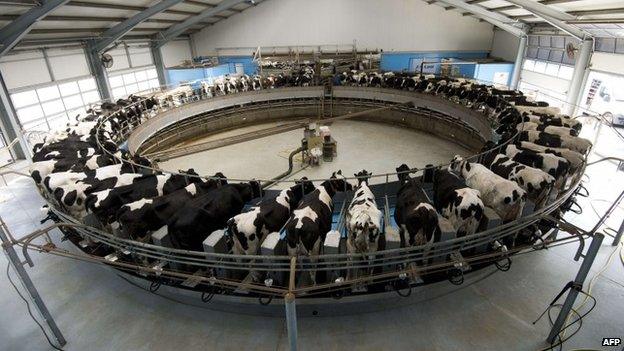
Larger farms have invested in rotary milking parlours to improve efficiency
Somerset dairy farmer James Hole said: "All they are going to end up doing is create huge milk pools coming out of Europe.
"Long term there will probably have to be another form of capping. I can't see how they can just make it a free-for-all."
Northern Ireland Agriculture Minister Michelle O'Neill said dairy farmers there faced a "difficult time" but she was "optimistic about the longer-term prospects... [if] the local dairy industry continues to pursue a market-led strategy with future decisions being taken in the context of input costs and market returns".
The EU milk quota system was set up after subsidised European milk production persistently outstripped consumer demand.
This led to the so-called milk lakes and butter mountains. From 1984, member states were fined heavily if they produced too much milk.
Quotas have been raised steadily in the past seven years in preparation for being lifted altogether.
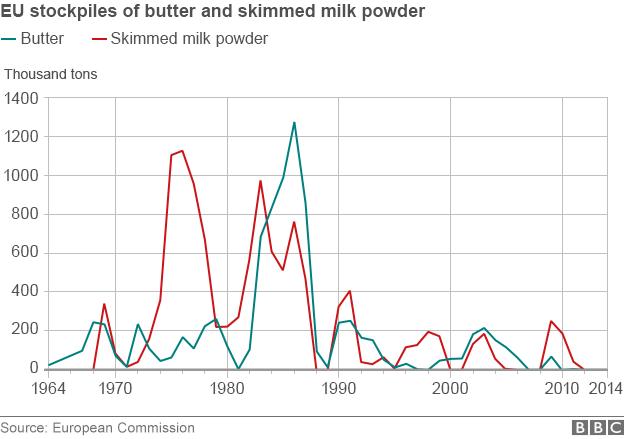

Analysis
By Laurence Peter, BBC News
Dairy farmers often struggle with price volatility, and the European Commission says quotas have not made their lives easier in that respect.
The prices paid to dairy farmers rose 13% in the first half of 2014, yet the corresponding consumer prices rose 8.4% in Germany, 1.6% in the UK and 0.8% in France.
It has taken years of tough negotiations to get to this point - and the Commission says there will still be a safety net for dairy farmers.
An EU Milk Market Observatory has been set up to help producers adjust to price fluctuations.
Read Laurence's full analysis in the Inside Europe Blog

Slim margins
The abolition of the system affects farmers in all 28 EU member states.
Belgian and other EU dairy farmers staged a protest in Brussels on Tuesday, fearing the lifting of quotas will drive small farms out of business.
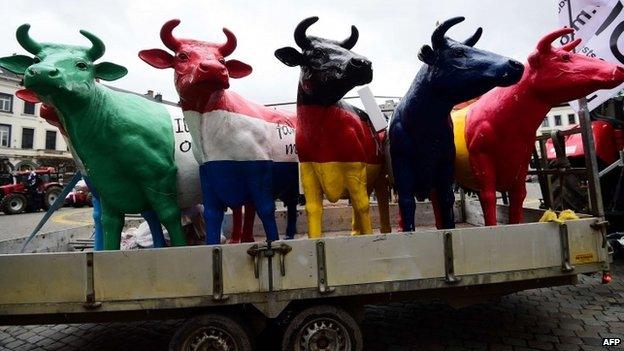
Dairy farmers took models of cows to Brussels on Tuesday as part of their protest
They have argued the lifting of quotas helps only big food companies and the largest milk producers, whose efficiency allows them to operate with slim margins.
"We're really scared that production is going to explode and we won't be able to pay our costs any more," said Belgian dairy farmer Yvan Deknudt.
He said the wholesale price of milk was already 30% lower than the level he needed to break even.
German dairy industry association president Karl-Heinz Engel said he was happy quotas were being scrapped.
"We're prepared... export-orientated and competitive," he said.
- Published1 April 2015
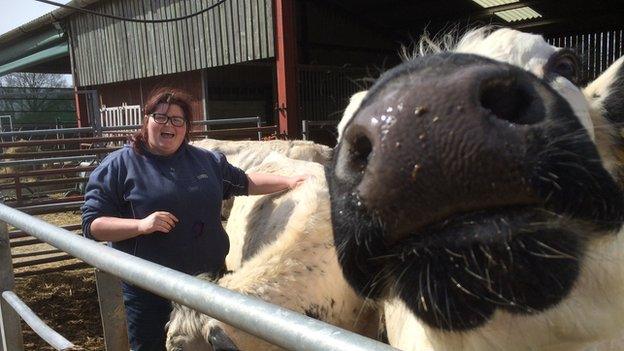
- Published31 March 2015
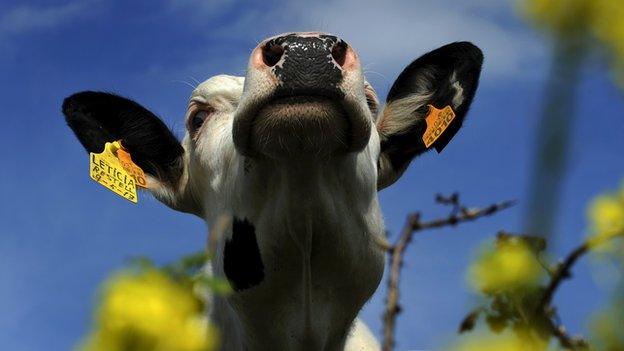
- Published20 January 2015
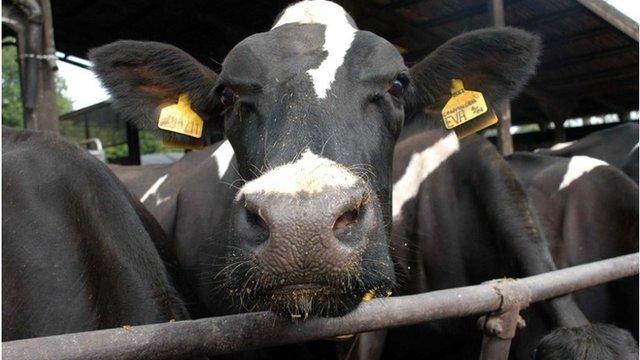
- Published27 March 2015
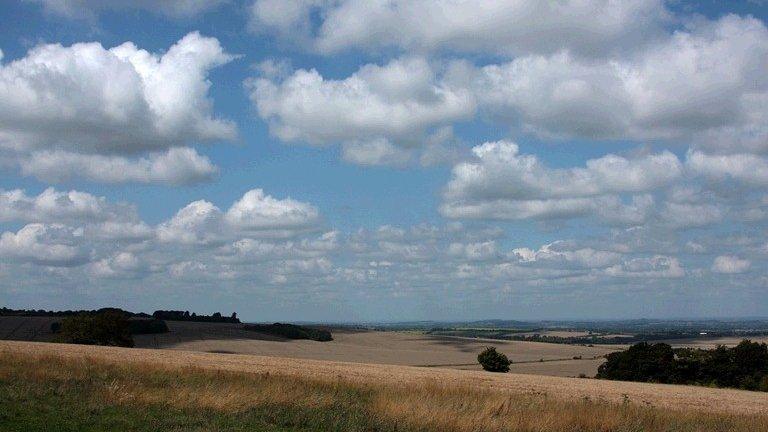
- Published1 July 2013